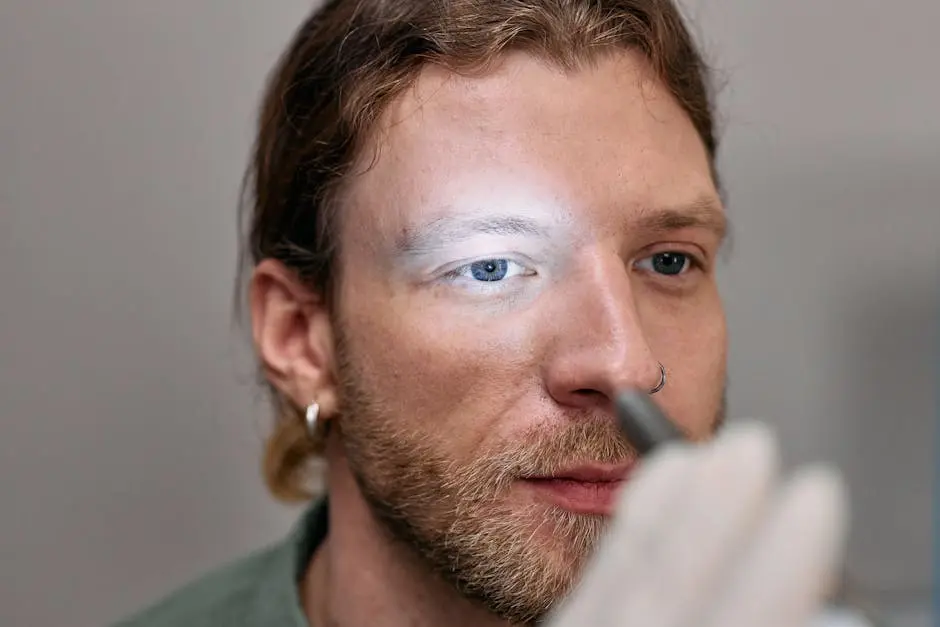
Dry Eye Syndrome can be an uncomfortable and sometimes mysterious condition. If you’re experiencing symptoms like irritation, redness, or a burning sensation, you might be wondering how an eye specialist determines exactly what’s going on with your eyes. Let’s explore the process of diagnosing Dry Eye Syndrome, a crucial step towards finding relief.
Discussing Symptoms and Medical History
The first step is a conversation with your eye specialist about the symptoms you’re experiencing and your medical history. This helps the specialist understand your specific experience and any underlying conditions that could be contributing to your symptoms. An open dialogue is crucial as it can reveal patterns or triggers, aiding in the diagnostic process.
During this discussion, the specialist may ask about your lifestyle, including any factors like screen time, allergies, or medications that might be affecting your eye health. It’s an opportunity for you to share even the minor details you might not think are related, as they can provide important clues.
Your eye specialist will also review your overall health and any past eye treatments, surgeries, or conditions. This comprehensive assessment helps in tailoring the diagnostic tests that will follow, ensuring that every aspect of your eye health is examined.
Conducting a Thorough Eye Examination
An eye examination is essential. The specialist will assess the overall health of your eyes using various tools and techniques to identify any signs of dry eye or other issues needing attention. This includes a visual acuity test to check how well you see at different distances.
Ophthalmoscopy might be performed, allowing the specialist to see inside the fundus of the eye and other structures. This is pivotal in ruling out more serious conditions that could mimic the symptoms of Dry Eye Syndrome.
The specialist may also evaluate the eye’s surface, looking for redness or corneal irregularities using a slit lamp examination. This advanced tool magnifies the structure of the eyes, offering a detailed view of the conjunctiva and cornea.
Evaluating Tear Production and Quality
Tests like the Schirmer test measure tear production, while others assess tear quality and evaporation rate. These tests are critical in determining whether your tears provide sufficient moisture and protection for your eyes.
Another method involves using specially designed dyes that temporarily color the tear film. By observing the spread of dye over the cornea, the specialist can evaluate tear film stability and detect any issues that might not be visible to the naked eye.
Advanced diagnostics may also include the use of osmolarity testing. This evaluates the salt content in your tears, which is often elevated in dry eye conditions, providing another layer of insight into your tear film’s integrity.
Analyzing Tear Film and Meibomian Glands
The eye specialist may also examine the tear film structure and the function of the meibomian glands, which produce the oil layer of your tear film. Dysfunction here is a common cause of dry eye.
Meibography, an imaging technique, allows for a detailed view of the meibomian glands. By analyzing their structure, the specialist could identify blockages or atrophies that affect the tear film’s lipid layer, a crucial defense against tear evaporation.
In addition, a gland expression test may be performed, applying gentle pressure to the eyelid margins to assess how the glands secrete oil. Healthy glands should release oil easily; difficulty in doing so may indicate meibomian gland dysfunction.
Using Specialized Diagnostic Tools
Advanced equipment, such as high-resolution cameras and imaging devices, help the specialist get a clearer picture of the ocular surface and tear layers, offering critical insights for an accurate diagnosis.
Instruments like the InflammaDry test can provide quick insights into the inflammatory markers in the tear film, which may indicate underlying issues contributing to dry eye symptoms.
Ocular coherence tomography (OCT), another advanced tool, gives a cross-sectional view of the eye, allowing for the detection of structural changes in the cornea and other parts of the eye. This detailed analysis assists in differentiating dry eye syndrome from other conditions.
Getting the Right Diagnosis: Your Gateway to Relief
Understanding the diagnostic process of Dry Eye Syndrome not only gives you insight into what to expect during your appointment but also prepares you to ask informed questions. Remember, addressing eye discomfort early can help prevent further complications and improve your quality of life. For detailed guidance and professional care, visit our homepage.

